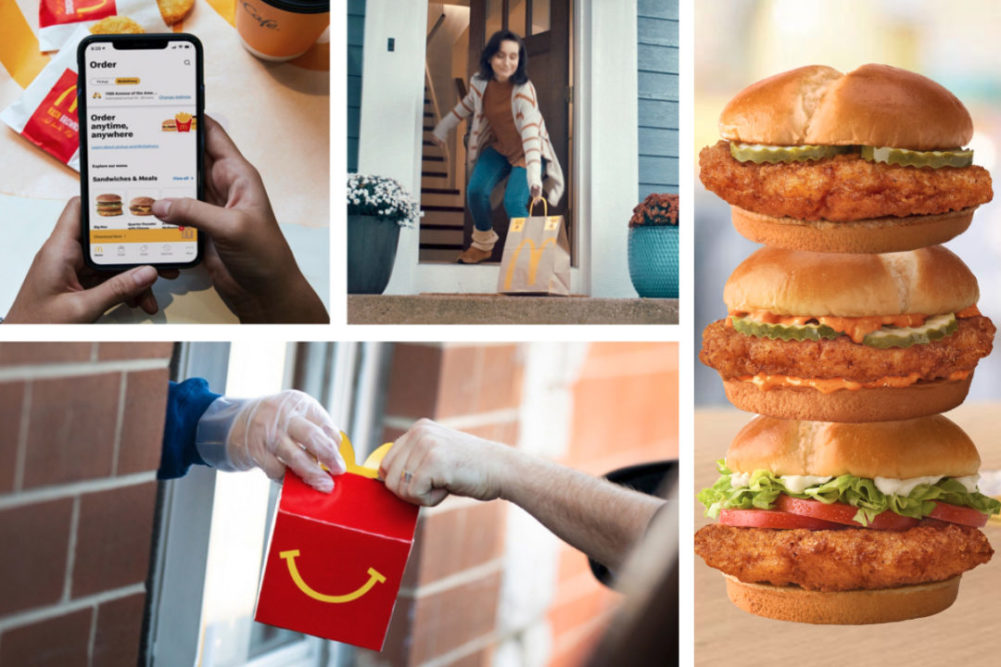CHICAGO — Maximizing marketing, committing to the core menu, and doubling down on digital, delivery and drive-thru are the key pillars of McDonald’s growth strategy in the year ahead. Christopher J. Kempczinski, president and chief executive officer of McDonald’s Corp., laid out the fast-food company’s priorities during a Jan. 28 conference call.
“Our significant marketing investment remains a true growth driver,” he said. “We're improving creative effectiveness and leaning into social and digital to drive customer engagement. Teams remain focused on the right balance of sales activation with brand building as we work to optimize marketing returns.”
The core menu items represent roughly 70% of food sales across McDonald’s top markets, driving growth and profitability even during a challenging year, Kempczinski said. Last year, the company introduced a bakery line in the United States, and it plans to improve its chicken sandwich offerings globally, he said.
“What's important is that our approach to our menu is thoughtful and judicious,” he said. “We've seen significant benefits with our streamlined menus and reduced complexity. New items must earn their place on the menu.”
McDonald’s investments in digital, delivery and drive-thru were the “difference maker” during the pandemic and are central to the company’s efforts to create a faster, easier and better customer experience, he said. Digital sales exceeded $10 billion, or nearly 20% of systemwide sales, in 2020 across the top six markets.
“We’re moving aggressively to bring My McDonald’s with mobile ordering, payment, delivery, rewards and fun promotions like digital calendars to our customers as soon as possible,” Kempczinski said. “We’re on track to have elements of My McDonald’s across our top six markets by the end of 2021, featuring loyalty programs in several of those markets, including a US loyalty launch later in 2021.”
Over the past four years, McDonald’s has expanded the number of restaurants offering delivery to nearly 30,000, he added. To improve drive-thru service times, the company has invested in staffing, positioning and order assembly.
“While each pillar will further extend our leadership, what’s especially powerful is the exponential impact when all three pillars come together,” Kempczinski said. “Famous orders platform in the US is a prime example. In the fourth quarter, we featured favorite menu items of Latin music icon J Balvin and classic holiday characters, including Santa Claus and the Grinch. With exclusive deals on our app, customers rediscovered iconic core menu items like Big Macs and Egg McMuffins and tried new items like cinnamon rolls.”
The past year was among the most difficult McDonald’s has seen, he said, referring to the pandemic, economic downturn and societal challenges that occurred. Results for the quarter and year reflected sales declines in international markets as a result of COVID-19 resurgences and government restrictions that were partly offset by a stronger operating performance in the US market due to higher-sales-driven restaurant margins. The company also recorded higher selling, general and administrative expenses, higher restaurant closing costs and lower gains on sales of restaurant businesses.
McDonald’s net income for the full year ended Dec. 31, 2020, totaled $4.73 billion, equal to $6.31 per share on the common stock, down 21% from $6.03 billion, or $7.88, the year before. Revenues for the year tumbled 10% to $19.21 billion from $21.36 billion the prior year.
Fourth-quarter income was $1.38 billion, equal to $1.84 per share, declining 12% from $1.57 billion, or $2.08, in the prior-year quarter. Quarterly revenues slid 2% to $5.31 billion from $5.43 billion the year-ago period.
Global comparable sales declined 7.7% for the year and 1.3% for the fourth quarter.
“While there were challenges across markets, some of our larger markets achieved positive comp sales for the full year, including the US, Japan and Australia, and that was on top of strong momentum coming into 2020,” Kempczinski said.
Comparable sales in the US market increased 5.5% for the fourth quarter, driven by growth across all major dayparts, said Kevin M. Ozan, executive vice president and chief financial officer.
“Dinner continued to be our leading daypart with strong sales of core items as customers keep coming back for familiar favorites,” Ozan said.
Value deals and the return of the McRib contributed to momentum, he added.
“In the US, sales comps continue to be strong and are expected to be up high single digits with continued growth across all dayparts and assisted by consumers receiving government stimulus checks,” Ozan said.


